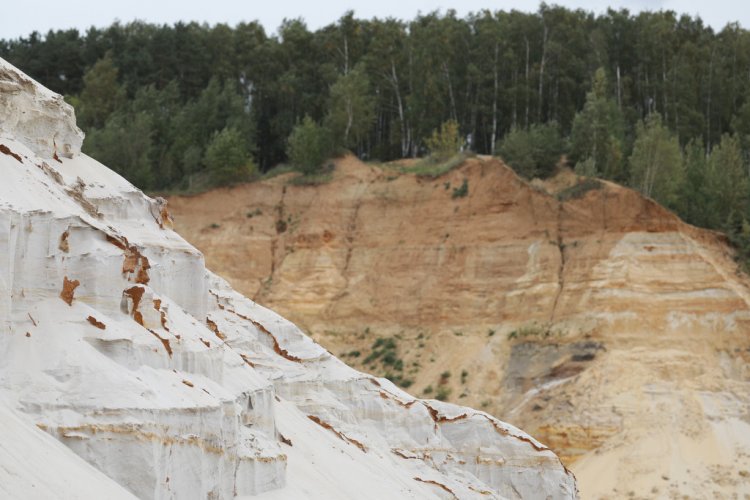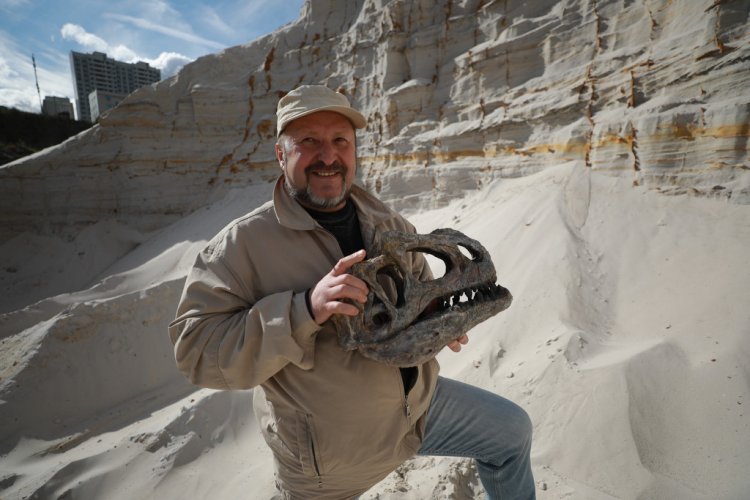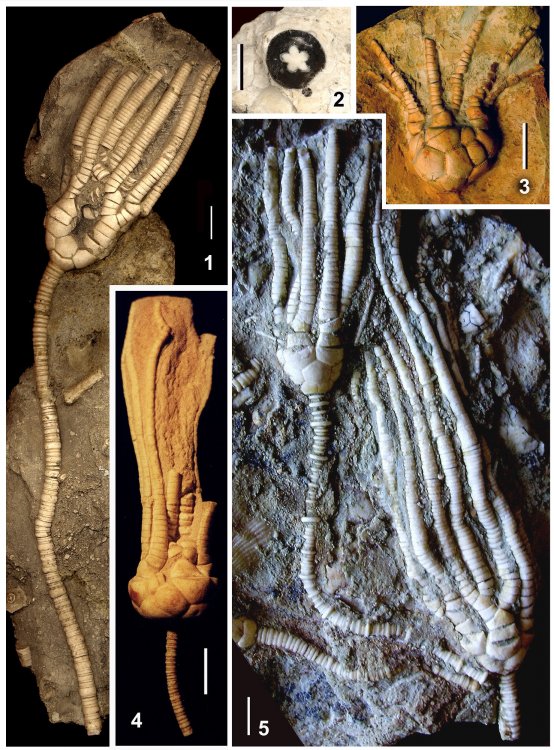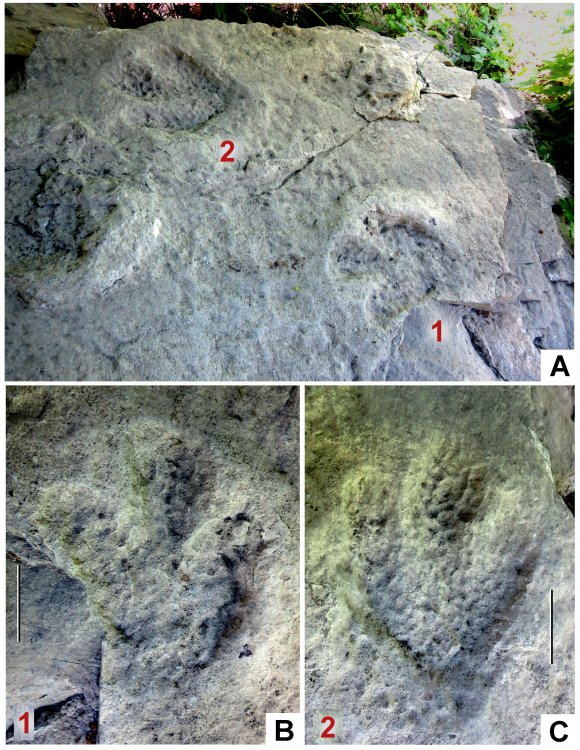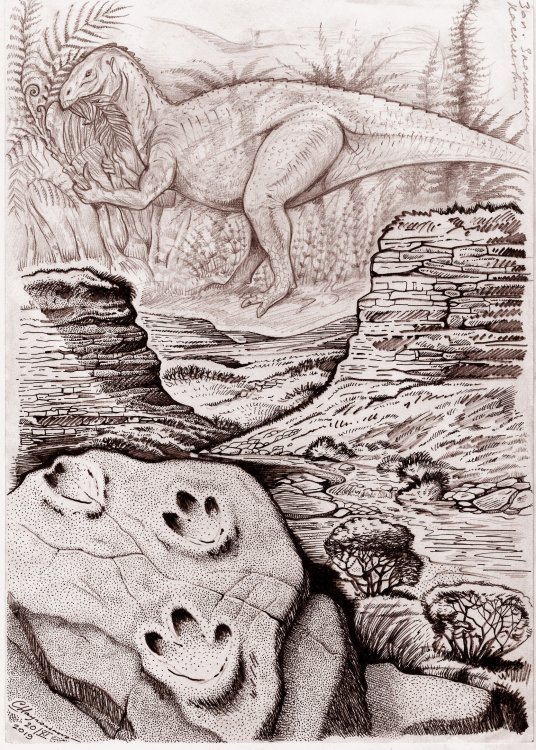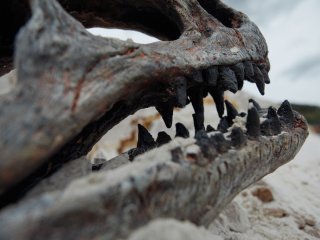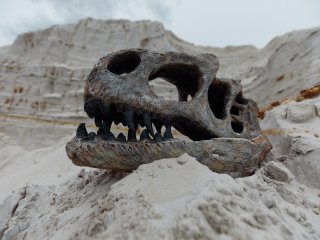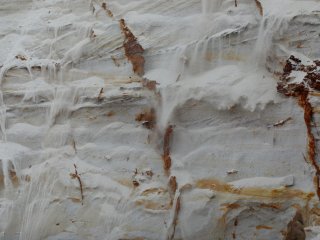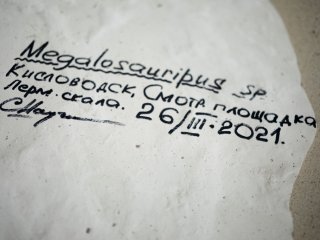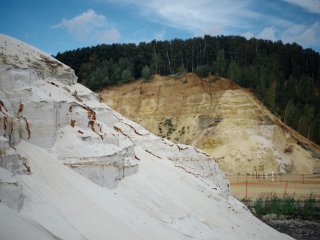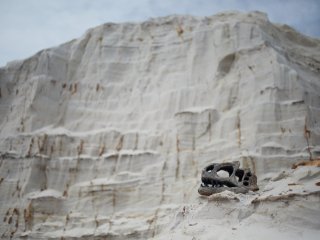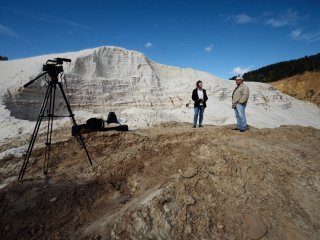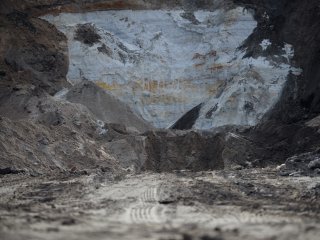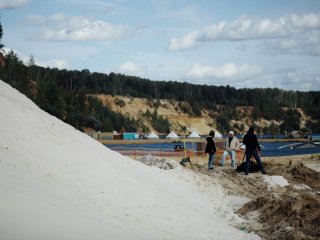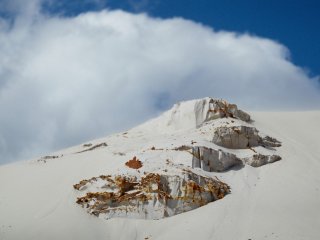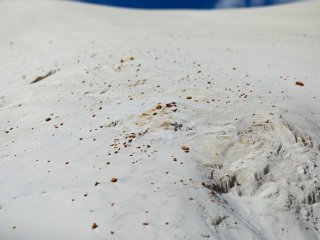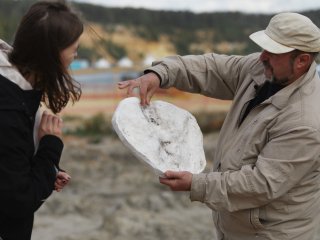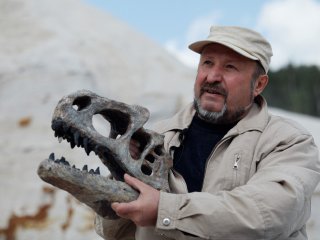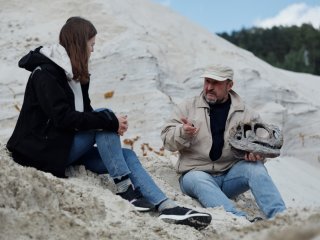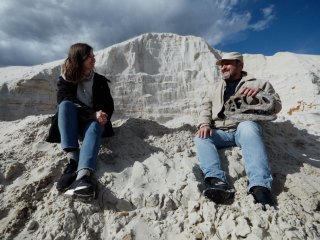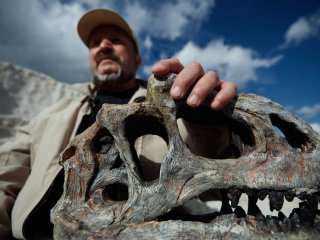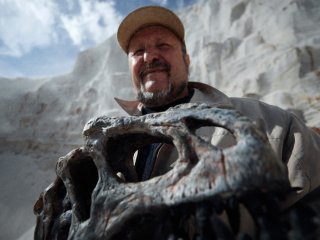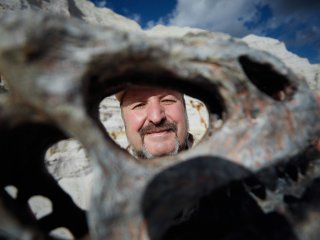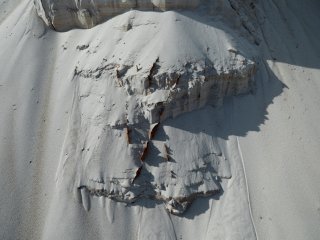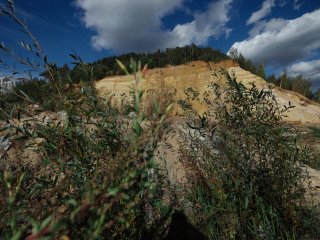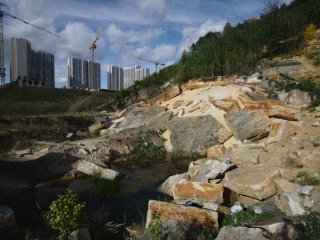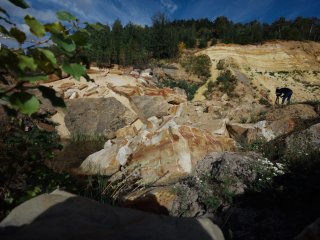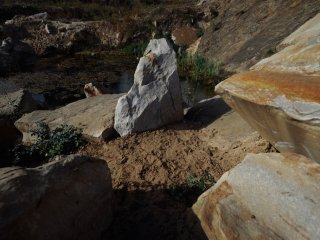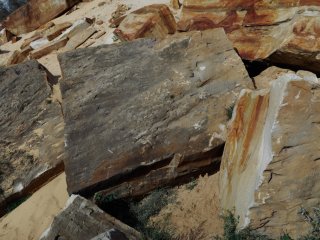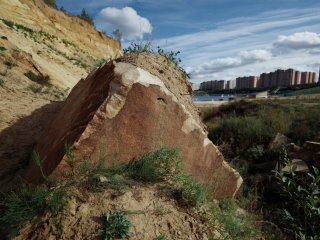Moscow is the only capital in the world surrounded by literally dozens of geological and paleontological monuments. Fossil remains of ancient animals, plants over one hundred million years old, and stratigraphically important geological sections can be found in Moscow Region.
Scientific Russia visited one of the most interesting places in Moscow Region from a paleontological point of view – Freestyle Park in the town of Dzerzhinsky, where some Cretaceous deposits of the Mesozoic era (began about 250 million years ago, ended 66 million years ago) have been preserved. We talked about paleontological findings from Moscow Region and some other things with professor of RAS, chief researcher of the Geological Institute of RAS, doctor of geological and mineralogical sciences, author of the new taxa of fossil plants Sergey Vladimirovich Naugolnykh.
─ What interesting can be found in Dzerzhinsky?
─ This place is really unique for Moscow Region. It exposes the deposits of the upper part of the Jurassic geological system (the Jurassic period began 201 million years ago and ended 145 million years ago) and a significant part of the Cretaceous system (the Cretaceous period ended 66 million years ago). Dzerzhinsky presents the lower section of the Cretaceous system, corresponding to the time interval from 145 to 100 million years ago. Moreover, as you can see, these deposits are exposed here very well. You can find quite a lot of interesting rocks, fossils, for example, shells of ammonites – cephalopod mollusks that became extinct about 66 million years ago. In general, the Freestyle Quarry and its surroundings are an extremely attractive place for a geologist-paleontologist.
Sedimentary deposits of the upper Jurassic and lower Cretaceous systems in the Freestyle Park, Moscow Region. Photo: Nikolay Malakhin / Scientific Russia
─ The Cretaceous Period – is that when the dinosaurs went extinct?
─ Yes, but first they thrived: the entire second half of the Triassic period (over 200 million years ago), the entire Jurassic period, and the entire Cretaceous period. Generally speaking, the Cretaceous period can be called the dinosaurs’ heyday. However, at the end of this period there was indeed a major renewal of biota, many groups – not only dinosaurs, but also pterosaurs, many marine reptiles, some groups of marine invertebrates, in particular, rudists – a class of extinct bivalve mollusks became extinct. The cephalopod mollusks ammonites and belemnites also became extinct. All in all, this was a very large-scale renewal of the biota on our planet and the Cretaceous sediments presented here can tell us a lot about life on Earth at that time.
Freestyle Park, Dzerzhinsky, Moscow Region. Photo: Nikolay Malakhin / Scientific Russia
─ You are studying the evolution of plants among other things. It is said that the appearance of flowers could be one of the reasons for the extinction of dinosaurs. What do you think of this theory?
─ Yes, such a theory or, more precisely, hypothesis exists. It is no secret that all elements of the ecosystem are closely interconnected. Thus, predatory dinosaurs hunted herbivores, and these, for their part, were oriented in the food chain towards certain plants, and, naturally, the evolutionary renewal of the ecosystem also influenced the evolution of its individual components.
Flowering plants appear in the geological record somewhere in the middle of the Cretaceous period (about 125 million years ago), which corresponds to what we see in the sediments in the Freestyle Park quarry. By the way, the remains of ancient plants are also found here. They are rare and poorly preserved, but you can find them, too. It is difficult to say to what extent the renewal of Cretaceous biota was connected with the plants evolution and the appearance of flowering plants – but obviously there was some connection.
Dinosaurs that lived in the mid-Mesozoic era mainly fed on holosemic plants such as cicadophytes, ginkgoids, conifers, and on spore plants such as ferns. However, later, in the middle of the Cretaceous, the animals faced a change of “diet,” since flowering plants appeared and gradually became more and more numerous, the physiological characteristics of plant-eating dinosaurs were in one way or another dependent on the food that they consumed. So, there may have been an indirect connection between the dinosaurs’ extinction and the flowering plants dominance.
By the way, it is also often said that dinosaurs might have been negatively affected by alkaloids – nitrogen-containing organic compounds that are widely present in the tissues of pectasperous plants. This hypothesis was proposed about 40 years ago by paleontologist T. Swain, but it has not been proven.
The extinction of animals, including dinosaurs, at the turn of the Cretaceous and Paleogene was not an isolated event. It was not the extinction of one group, but a change in the state of the ecosystem as a whole. Every ecosystem has a safety margin, so flowers alone are not enough to change it so much that the biota is renewed by 90% – the system should have been weakened from the inside already.
Apparently, the ecosystem was in a state of dynamic equilibrium at the end of the Cretaceous period, i.e., any occasion, any push from the outside, a so-called trigger, was enough for this ecosystem to be disturbed. Perhaps an impact event like the fall of an asteroid played the role of such a trigger, but this is only a separate matter, the most important thing is that the ecosystem had been already prepared for the renewal process. That is my point of view. Paleontologists are still arguing on this issue.
S. V. Naugolnykh with the skull of Megalosaurus – a large carnivorous theropod dinosaur of the Megalosauridae family. Photo: Nikolay Malakhin / Scientific Russia
─ Let's get back to Moscow Region. What else can amateur paleontologists find here?
─ Generally speaking, there are a lot of interesting places in Moscow Region that are famous in terms of paleontology, besides the Freestyle. I regularly hold excursions with schoolchildren and students to the most noteworthy places in Moscow Region. For example, there are very interesting sites a little further away from here, along the Kazan direction as well – there are phosphate quarries near the town of Voskresensk. Afanasievsky quarry in the Voskresensk area is truly famous among professional geologists and paleontologists. This place is famous for the findings of sea lilies (crinoids) and sea stars of excellent preservation, as well as teeth of Carboniferous sharks and bradyodonts.
We should also mention the famous quarry near the Peski station, which is located between Voskresensk and Kolomna. The Peski quarry contains very representative sections of the Middle and Upper Carboniferous (from 323 to 298 million years ago) and Jurassic periods.
Speaking of dinosaurs – besides other places in our country (Siberia: famous locations of Sharypovo, Shestakovo, Kulinda, etc.), they are also known from Moscow Region. Fossil remains of dinosaurs of several species, including teeth, claws and vertebrae, were found in the Peski quarry in the early 2000s. So, Moscow Region is also famous for dinosaur findings. It is not as rich as in Mongolia, of course, but still.
In addition, Moscow Region contains the richest fauna of fossil marine invertebrates. The phosphorite quarries near Voskresensk are famous for ammonites such as virgatites, kashpurites, and craspedites.
The coal-bearing sediments of Moscow Region are also very rich with fossil remains. Can you imagine the diversity of life on a coral reef? Surprisingly, such coral reefs were present here in Moscow Region about 330-300 million years ago. And all this diversity has been preserved in the fossil form. So, our Moscow Region is really unique.
Fossil sea lilies (Crinoidea) from Carboniferous deposits of Moscow Region (by: Naugolnykh, 2017).
─ Tell us about new findings of dinosaur footprints in the Kislovodsk area. As far as I know, there were no such large paleontological studies in Kislovodsk before, is it true?
─ I deal with the study of paleosoils mainly, but for the complete sequence of paleosoil profiles, my colleagues and I lacked Cretaceous paleosoils. And right in the Fore-Caucasus, just in the first half of the Cretaceous, there was a very shallow basin with islands, where remnants of such soils could be found. While studying the topic I came across some publications in the popular scientific press about the findings of dinosaur footprints near Kislovodsk. At that time, it was the only finding of such kind in Russia – a slab with three footprints of some dinosaur. There were no scientific publications about this finding, it was only published in the popular scientific press and in local history books. Therefore, more than 15 years ago I organized special trips to the Kislovodsk area to search for paleosoils, and this slab with dinosaur footprints was the main object of my research.
As for the Kislovodsk slab, it is located near the protected Narzan spring in the Olkhovka river valley. Having carefully studied the slab, I came to the conclusion that it fell into the Olkhovka valley from above, when the edge of a rock ledge, formed by dolomites and limestones of the Valanginian stage of the Lower Cretaceous, broke off. It was possible to determine what kind of dinosaur it was: a two-legged or bipedal, herbivorous ornithopod dinosaur, most likely a member of the iguanodontidae family. This dinosaur, of course, could not live alone in the ecosystem, wandering lonely on the beach and leaving pawprints. It was clear that we had to look for other traces as well. Then a group of like-minded people and I organized several routes along Olkhovka and Berezovka Gorge, and after a careful study of Valanginian deposits, which are exposed in both Olkhovka and Berezovka valleys, we managed to find some new footprints of different types of dinosaurs. We found the footprints similar to those found at the Narzan spring, as well as footprints of other morphological types, whose presence in the Kislovodsk area had been unknown before. We managed to find footprints left by predatory dinosaurs, apparently megalosaurids. These footprints belong to the formal Megalosauripus genus. Moreover, these footprints were different as well. We found relatively small footprints – apparently footprints with clawed phalanxes on the toes belonging to relatively small predators; and we managed to find some footprints of large megalosaurs, too.
Slab with footprints of a bipedal herbivorous dinosaur, ornithopod, presumably of the family Iguanodontidae from the Olkhovka River valley. Photo provided by S. V. Naugolnykh (by: Naugolnykh, 2020, with changes and additions).
Pictures of the distant past emerge from oblivion in the Fore-Caucasus region gorges over the slabs with dinosaur footprints. Illustration provided by S. V. Naugolnykh.
─ How did it happen that nobody had come across these footprints before in so many years in the tourist town of Kislovodsk?
─ The explanation is actually quite simple. The thing is that the Kislovodsk footprints are not distinguished by color in any way – they are distinguished by relief only. This is the main difficulty in their finding. If you just walk in the gorge in the daytime, the light falls on the slab surface frontally and the footprints do not stand out against the background of the surrounding rock.
─ So you should walk at dawn, right?
─ Yes, you should walk either at sunrise or sunset, because only when the light falls at an angle, there is a drawing effect and you can see the prints. That's how the great majority of footprints were found. Of course, if you look for them on purpose, you will find them, but if you just happen to be walking and passing by, you are unlikely to pay attention to them.
What is the main beauty of Kislovodsk paleontology? It has a rich ichnofauna (note: fossilized animal traces). All this diversity of footprints allows us to imagine the total number of dinosaur species (and not only that) that inhabited this area in the Early Cretaceous epoch. Now we know that ornithopods – iguanodontids, predatory dinosaurs such as megalosaurids, segnosaurs, and others lived in this area during the Valanginian time of the Early Cretaceous epoch. We also found supposed prints of pterosaurs, i.e., flying lizards, in the Kislovodsk area. They have not yet been described, but we are preparing their description for publication.
So now we have all preconditions to reconstruct the Early Cretaceous ecosystem of this region.
─ How are dinosaur footprints protected and what can be done to preserve them?
─ The problem of footprint protection breaks down into two large parts. First, these traces are destroyed naturally by aggressive environmental influences, such as precipitation. Let me remind you that many of these traces are located in the valleys of the Olkhovka and Berezovka and these are mountain rivers, which means that during floods and seasonal rise of water these rivers turn into violent streams, which carry huge amounts of clastic particles and small fragments of rocks that work as an abrasive. Therefore, the footprints that are exposed in the valleys of these rivers are gradually erased and may be lost for the science. The second part of the problem of preserving traces is vandalism: there are many tourists and unfortunately not all of them are educated people. We have negative examples when amateur paleontologists tried to make some casts of footprints, but did it incorrectly: poured cement on the footprints, thereby contributing to their degradation or even destruction. Therefore, local historians and self-government bodies must take the protection of dinosaur footprints in Kislovodsk under their control.
It is desirable to cover those footprints that are now exposed with special polymer materials for preservation. It is necessary to take authentic casts of these footprints. In addition, protective and educational activities would be very helpful, at least – the installation of special protective plates near the footprints, for example near the Lermontov cliff. The beautiful geological and paleontological monuments of Kislovodsk do deserve such protection.
The subject of footprints in the Kavminvody and Kislovodsk area should be popularized: for example, it is possible to devote special exhibitions to this topic in the local museums of local history. It would be a good idea to move part of the footprints to the territory of museums. Basically, it is possible. I think that the citizens of Kislovodsk should be concerned about this. And last but not least – all these measures should be taken under the supervision of highly qualified experts, with strict scientific-expert support. It is only possible to preserve the unique traces of ancient life, which allow us to get an idea about the past of our planet, by our joint efforts.
RELATED LINKS::
● S. V. Naugolnykh, Paleontology of Moscow and Moscow Region, Moscow, NAUKA Publishing House, 2017.
● S. V. Naugolnykh, Returning to the “Dinosaur Shore,” Priroda (Nature) RAS journal, July 2021.
● S. V. Naugolnykh, Encounters with Prehistoric Worlds, NAUKA Publishing House, 2017.
● Naugolnykh S.V. Dinosaur tracks from the Caucasian Mineral Waters Country in the context of the study of Lower Cretaceous paleosols of this region // Paleontological Journal. 2020. Vol. 54. No. 7. P. 87–96.
More about S. V. Naugolnykh ─ on the website of RAS professors.


